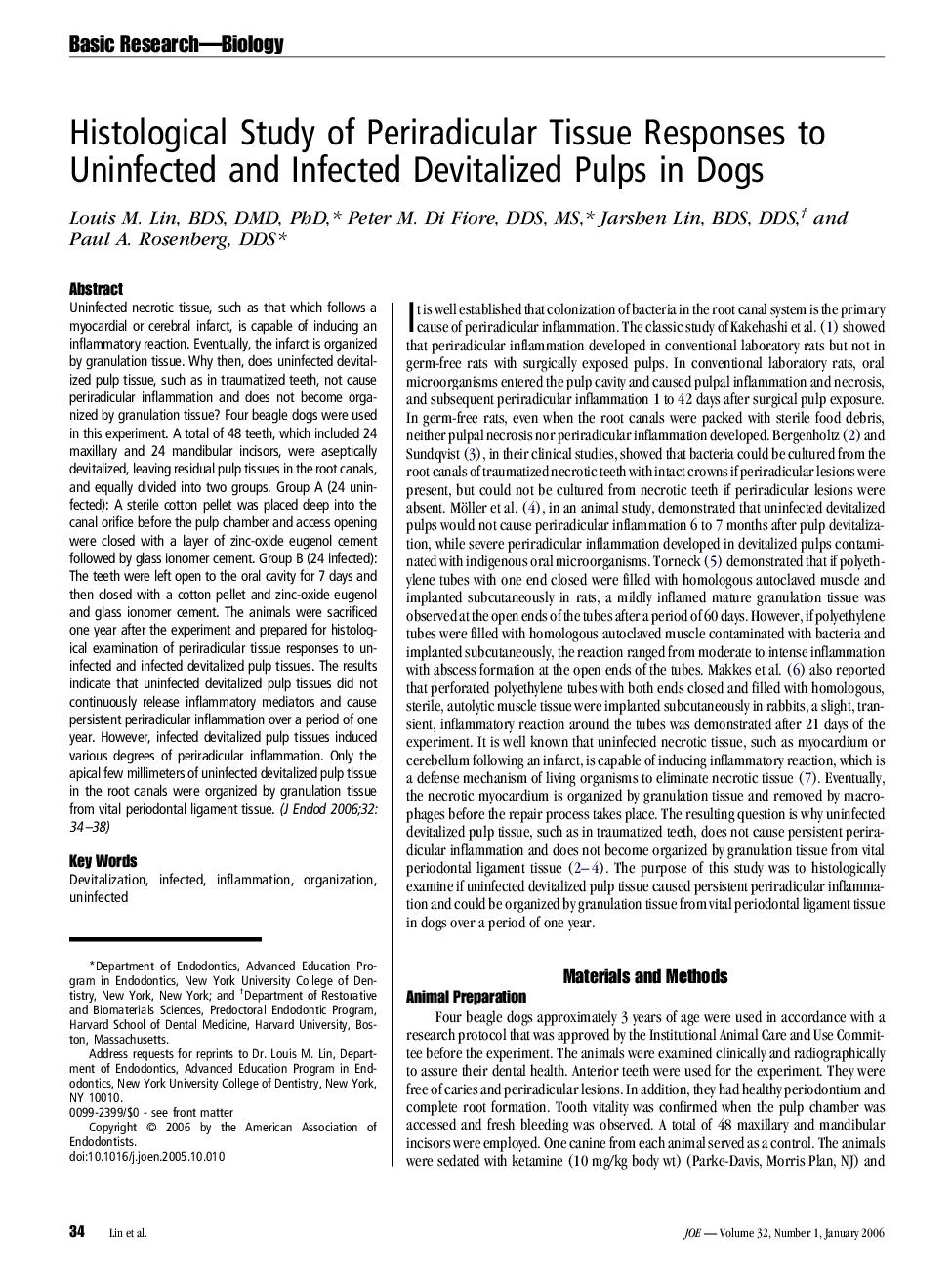| Article ID | Journal | Published Year | Pages | File Type |
|---|---|---|---|---|
| 3148243 | Journal of Endodontics | 2006 | 5 Pages |
Abstract
Uninfected necrotic tissue, such as that which follows a myocardial or cerebral infarct, is capable of inducing an inflammatory reaction. Eventually, the infarct is organized by granulation tissue. Why then, does uninfected devitalized pulp tissue, such as in traumatized teeth, not cause periradicular inflammation and does not become organized by granulation tissue? Four beagle dogs were used in this experiment. A total of 48 teeth, which included 24 maxillary and 24 mandibular incisors, were aseptically devitalized, leaving residual pulp tissues in the root canals, and equally divided into two groups. Group A (24 uninfected): A sterile cotton pellet was placed deep into the canal orifice before the pulp chamber and access opening were closed with a layer of zinc-oxide eugenol cement followed by glass ionomer cement. Group B (24 infected): The teeth were left open to the oral cavity for 7 days and then closed with a cotton pellet and zinc-oxide eugenol and glass ionomer cement. The animals were sacrificed one year after the experiment and prepared for histological examination of periradicular tissue responses to uninfected and infected devitalized pulp tissues. The results indicate that uninfected devitalized pulp tissues did not continuously release inflammatory mediators and cause persistent periradicular inflammation over a period of one year. However, infected devitalized pulp tissues induced various degrees of periradicular inflammation. Only the apical few millimeters of uninfected devitalized pulp tissue in the root canals were organized by granulation tissue from vital periodontal ligament tissue.
Related Topics
Health Sciences
Medicine and Dentistry
Dentistry, Oral Surgery and Medicine
Authors
Louis M. BDS, DMD, PhD, Peter M. DDS, MS, Jarshen BDS, DDS, Paul A. DDS,
